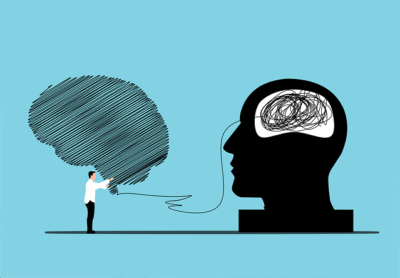Mental health spectrum describes the full range of emotional and psychological wellbeing, from optimal functioning to critical crisis. Across international clinics and diagnostic manuals, experts agree that mental states lie along a continuum—rather than a simple “healthy vs. ill” divide—requiring tailored interventions at each level. This article begins with a comparative table of established models, then delves into each framework in detail. You will find practical guidance on how to recognize and respond at every stage, an expert opinion on the most actionable model, and a step-by-step real-world case study illustrating moment-by-moment management. Finally, we’ll compare key features of these approaches in a summary diagram.
Table of contents
- 1. What Models Define the Mental Health Spectrum?
- 2. In-Depth: The Continuum Model
- 3. In-Depth: DSM-5 Severity Specifiers
- 4. In-Depth: ICD-10 Severity Ratings
- 5. mental health spectrum: Expert Recommendation: Which Model Offers the Best “How-To”?
- 6. mental health spectrum: Case Study: Fatima’s Journey
- ⚖️ mental health spectrum: Comparative Pros & Cons of Each Model
- ✅ Checklists and Templates
1. What Models Define the Mental Health Spectrum?
Below is an overview of three leading frameworks used by global clinics and diagnostic bodies to categorize levels of psychological wellbeing and disorder. Each model segments the spectrum into progressive zones or severity specifiers, guiding clinicians and individuals toward appropriate supports.
| Model | Levels/Zones | Primary Use |
|---|---|---|
| Continuum Model (Canadian Armed Forces) | Green – Healthy Yellow – Mild distress Orange – Injury Red – Clinical illness | Early self-screening; stigma reduction; promotion of self-help and peer support |
| DSM-5 Severity Specifiers | Mild Moderate Severe | Clinical diagnosis; treatment planning; insurance coding |
| ICD-10 Severity Ratings | Mild Moderate Severe (Plus disorder-specific levels, e.g., profound intellectual disability) | Global epidemiology; standardized reporting; cross-disciplinary communication |
1.1 mental health spectrum: How Does the Continuum Model Work?
The Continuum Model, developed for military and first-responder populations, uses color-coded zones to bypass diagnostic labels and reduce stigma.
- Green (Healthy): Individuals exhibit adaptive coping, emotional resilience, and full functioning in daily roles.
- Yellow (Mild Distress): Early signs of stress emerge—sleep changes, irritability—with reversible impact on work or relationships.
- Orange (Injury): Persistent distress and declining performance indicate that professional support (counseling, brief therapy) is advisable.
- Red (Clinical Illness): Symptoms meet formal diagnostic criteria; intensive interventions (medication, specialized therapy) are required.
1.2 What Are DSM-5 Severity Specifiers?
In the DSM-5, each mental disorder can be tagged with a severity specifier—mild, moderate, or severe—based on:
- Number of criteria met for that disorder.
- Degree of distress reported by the patient.
- Impact on social and occupational functioning.
For example, a person with major depressive disorder who meets only the minimum number of criteria, reports manageable distress, and maintains most daily activities would be labeled mild, whereas someone with pervasive symptoms and major life disruption would be severe.
1.3 How Does ICD-10 Rate Severity?
The ICD-10 mirrors DSM-5’s approach but expands certain categories with disorder-specific gradations. Across most conditions, clinicians specify:
- Mild: Limited symptom count; patient retains most functional abilities.
- Moderate: Clear interference with routine activities; may require combined psychosocial and pharmacological treatment.
- Severe: High symptom burden; significant disability; often urgent or inpatient care.
Additionally, for intellectual disabilities, ICD-10 defines four levels: mild, moderate, severe, and profound based on adaptive functioning.
2. In-Depth: The Continuum Model
2.1 Green → Yellow → Orange → Red: What Changes at Each Phase?
- Green (Healthy)
- Indicators: Steady energy, adaptive coping, normal sleep, positive relationships.
- Action: Continue self-care and periodic check-ins.
- Why it works: Emphasizes resilience and affirms that everyone can fluctuate without stigma.
- Yellow (Mild Distress / “Reacting”)
- Indicators: Irritability, occasional insomnia, low-level worry or sadness.
- Action: Apply brief self-help (mindful breaks, peer support), monitor changes over one week.
- Evidence: Early intervention here prevents escalation; distress is reversible with low-intensity support.
- Orange (Injury / Persistent Impairment)
- Indicators: Pervasive anxiety, declining work/school performance, withdrawal.
- Action: Seek professional counseling or brief therapy; introduce structured routines.
- Evidence: Orange-level individuals show significant functional impairment and benefit most from guided psychosocial interventions.
- Red (Clinical Illness / “Ill”)
- Indicators: Diagnostic criteria met (e.g., DSM-5 for MDD), suicidal ideation, severe functional loss.
- Action: Urgent clinical evaluation, possible medication, specialized psychotherapy, or inpatient care.
- Evidence: Red-phase members require concentrated medical care; delays in treatment worsen prognosis .
3. In-Depth: DSM-5 Severity Specifiers
3.1 How “Mild,” “Moderate,” and “Severe” Are Determined
- Mild: Meets minimum criteria; distress is manageable; daily functioning largely intact.
- Moderate: Presents additional symptoms or greater intensity; noticeable impact on social/occupational roles.
- Severe: Exceeds core symptom threshold significantly; causes marked distress and major life disruption.
3.2 Clinical Utility
- Treatment planning: Guides choice of psychotherapy intensity and need for pharmacotherapy.
- Outcome tracking: Enables standardized measurement across sessions, improving care continuity.
4. In-Depth: ICD-10 Severity Ratings
4.1 Universal vs. Disorder-Specific Levels
- Generic levels (most disorders):
- Mild: Limited symptom count; functioning generally preserved.
- Moderate: More symptoms; routine activities impaired.
- Severe: High symptom burden; often requires urgent or inpatient treatment.
- Example (Depressive Episode):
- F32.0 – Mild single episode
- F32.1 – Moderate single episode
- F32.2 – Severe single episode without psychotic features
- F32.3 – Severe with psychotic features.
4.2 Global Reporting and Epidemiology
- Facilitates comparison across countries and health systems.
- Essential for public health planning and resource allocation.
5. mental health spectrum: Expert Recommendation: Which Model Offers the Best “How-To”?
| Criterion | Continuum Model | DSM-5 Specifiers | ICD-10 Ratings |
|---|---|---|---|
| Accessibility for Lay Public | ★★★★★ (Uses plain colors) | ★★☆☆☆ (Technical language) | ★★☆☆☆ (Coded terminology) |
| Guidance on Action Steps | ★★★★★ (Clear “what to do”) | ★★★☆☆ (General treatment advice) | ★★☆☆☆ (Clinical focus only) |
| Clinical Precision | ★★☆☆☆ (Broad zones) | ★★★★★ (Disorder-specific) | ★★★★☆ (Standardized globally) |
Verdict: The Continuum Model best bridges “how to” with low stigma, offering precise self-help and peer-driven steps in every phase. Clinicians can then layer DSM-5 or ICD-10 for formal diagnosis and coding.
6. mental health spectrum: Case Study: Fatima’s Journey
Background: Fatima, 29, teacher, begins to notice subtle shifts in mood and energy.
| Time | Phase | Signs & Symptoms | Actions Taken | Advice |
|---|---|---|---|---|
| Day 1 | Green | Wakes feeling rested; enthusiastic about lessons. | Maintains morning run and journaling. | Keep logs: Track mood and sleep to spot changes over time. |
| Day 7 | Yellow | Notices mild irritability; sleeps 1-2 hours less; slight fatigue in class. | Implements 10-min breathing breaks twice daily; shares concerns with a trusted colleague. | Set reminders for breaks; lean on social support early. |
| Day 14 | Orange | Persistent low mood; misses grading deadlines; isolates after work. | Books a counseling session; resumes light exercise; sets structured bedtime routine. | Professional help: Minimal wait-time services reduce risk of Red phase. |
| Day 21 | Red | Reports suicidal thoughts; stopped eating; unable to teach. | Counselor refers her for psychiatric evaluation; starts antidepressant; admitted for 48 hours observation. | Emergency plan: Always know crisis numbers; involve family in safety planning. |
| Day 30 | Orange → Red Recovery | After discharge, attends CBT twice weekly; joins peer support group. | Builds relapse prevention plan with therapist; rebalances work-life with part-time schedule; reconnects with friends. | Relapse prevention: Include warning-sign trackers, emergency contacts, and coping strategies. |
| Day 60 | Yellow → Green | Mood stabilizes; energy returning; resumes full-time teaching. | Continues weekly peer-check-ins; practices gratitude journaling; plans quarterly mental health days. | Sustain gains: Regularly revisit self-care; stay vigilant for new stressors. |
6.1 mental health spectrum: Step-by-Step Management Tips
- Record Early Warnings: Use simple mood/sleep charts each morning and evening.
- Engage Social Supports: Tell close friends or colleagues; peer check-ins reduce isolation .
- Set Micro-goals: When energy dips, aim for 10-minute tasks (e.g., walk, stretch). This maintains momentum.
- Professional Triage: At Orange, seek brief therapy or counseling within one week.
- Crisis Protocol: In Red, have emergency contacts, crisis line numbers, and safety plans at hand.
⚖️ mental health spectrum: Comparative Pros & Cons of Each Model
| Model | Pros | Cons |
|---|---|---|
| Continuum Model | • Uses plain-language color zones to reduce stigma and promote early self-help | |
| • Encourages peer support and self-monitoring before clinical thresholds are met | • Lacks the granularity needed for diagnostic coding or insurance purposes | |
| • Not disorder-specific, so it may overlook nuanced symptom patterns | ||
| DSM-5 Severity Specifiers | • Align directly with formal diagnostic criteria, guiding precise treatment planning | |
| • Facilitate outcome tracking and research consistency | • Applying severity can be subjective, risking overdiagnosis | |
| • Technical language may confuse non-clinicians | ||
| ICD-10 Severity Ratings | • Globally standardized, supporting epidemiology and resource allocation | |
| • Disorder-specific codes enable detailed reporting | • Extensive code lists can be cumbersome for initial assessment | |
| • Some conditions lack appropriate codes, complicating early detection |
✅ Checklists and Templates
📝 Personal Self-Assessment Checklist
Use this K10-based tool weekly to spot early shifts in mood and stress:
- In the past four weeks, how often did you feel tired for no good reason?
- In the past four weeks, how often did you feel nervous?
- In the past four weeks, how often did you feel so nervous that nothing could calm you?
- In the past four weeks, how often did you feel hopeless?
- In the past four weeks, how often did you feel restless or fidgety?
- In the past four weeks, how often did you feel so restless you could not sit still?
- In the past four weeks, how often did you feel depressed?
- In the past four weeks, how often did you feel that everything was an effort?
- In the past four weeks, how often did you feel so sad that nothing could cheer you up?
- In the past four weeks, how often did you feel worthless?
Scoring: Rate each item 1 (None of the time) to 5 (All of the time). Total ≥ 30 suggests professional consultation.
🏥 Clinical Intake & Evaluation Checklist
Adapted from APA intake forms, this template ensures comprehensive history-taking:
- Demographics: Name, age, contact, referral source.
- Presenting Problem: Chief complaint, symptom onset, duration, severity.
- Psychiatric History: Past diagnoses, treatments, hospitalizations.
- Medical History: Chronic illnesses, medications, allergies.
- Family History: Mental health/substance issues in relatives.
- Social/Developmental History: Education, employment, relationships, trauma.
- Current Functioning: Sleep, appetite, energy, concentration, daily routines.
- Risk Assessment: Suicidal/homicidal ideation, self-harm behaviors, safety plan.
- Substance Use: Tobacco, alcohol, drugs, gambling/gaming behaviors.
- Strengths & Supports: Coping skills, social network, spirituality.
- Initial Formulation & Plan: Provisional diagnosis, recommended interventions, referrals.
These tools and comparisons equip you to visualize, evaluate, and act at every level of mental health—whether for self-monitoring or formal clinical assessment.
References
- Canada.ca (Mental Health Continuum Model overview)
https://www.canada.ca/en/department-national-defence/services/benefits-military/health-support/road-to-mental-readiness/mental-health-continuum-model.html - Canada.ca (Mental Health Continuum Model PDF guide)
https://www.canada.ca/content/dam/eccc/documents/pdf/corporate-info/covid-19/mental-health-continuum.pdf - Psychiatry.org (DSM-5 Overview)
https://www.psychiatry.org/psychiatrists/practice/dsm - Psychiatry.org (DSM-5 Fact Sheets)
https://www.psychiatry.org/psychiatrists/practice/dsm/educational-resources/dsm-5-fact-sheets - WHO.int (ICD-10 Classification of Mental and Behavioural Disorders)
https://icd.who.int/browse10/2016/en - WHO.int (ICD-10 Diagnostic Criteria for Research PDF)
https://apps.who.int/iris/bitstream/handle/10665/37108/9241544554.pdf - NICE.org.uk (Depression in Adults: Recognition and Management CG90)
https://www.nice.org.uk/guidance/cg90 - NICE.org.uk (Depression in Adults: Treatment and Management NG222)
https://www.nice.org.uk/guidance/ng222 - PubMed (Hamilton Depression Rating Scale – HDRS)
https://pubmed.ncbi.nlm.nih.gov/7124430/ - PubMed (Kessler Psychological Distress Scale – K10)
https://pubmed.ncbi.nlm.nih.gov/23567398/ - PubMed Central (Work Stress and Depression in Young Workers)
https://pmc.ncbi.nlm.nih.gov/articles/PMC2062493/ - PubMed Central (Early Intervention in Psychosis Services)
https://pmc.ncbi.nlm.nih.gov/articles/PMC8792869/ - NICE.org.uk (Common Mental Health Disorders: Identification and Pathways to Care CG123)
https://www.nice.org.uk/guidance/cg123 - JAMA Network (Strategic Plan for Research on Mental Illness)
https://jamanetwork.com/journals/jamapsychiatry/fullarticle/210235











